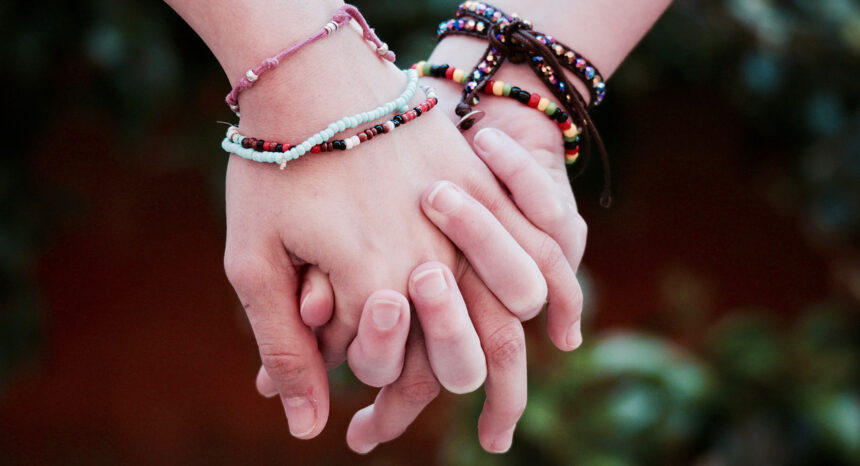A new study suggests young women who are not heterosexual are at a greater risk of accidental pregnancy, partly because they are less likely than straight women to use contraceptives.
The issue: Teen pregnancy rates have dropped significantly over the last decade, but hundreds of thousands of babies continue to be born each year to women aged 15 to 19, according to the U.S. Centers for Disease Control and Prevention (CDC). Meanwhile, research has shown that teenage girls who have relationships with people from both genders have a higher pregnancy rate than heterosexual girls. For example, a 2013 study published in the American Journal of Obstetrics and Gynecology found that 20.4 percent of women who identified as bisexual had been pregnant at age 19 or younger. In comparison, 9.9 percent of straight women and 7.2 percent of lesbians had been pregnant at some point during their teen years.
As scholars continue to study the causes and consequences of teen pregnancy, they have begun to pay more attention to young women who are sexual minorities. They warn that public health officials need to do more to curb teen pregnancy within this population.
An academic study worth reading: “Non-Heterosexuality, Relationships, and Young Women’s Contraceptive Behavior,” published in Demography, 2017.
Study summary: Elizabeth J. Ela and Jamie Budnick of the University of Michigan’s Population Studies Center look at how young, heterosexual women differ from young, non-heterosexual women in terms of relationships and contraceptive use. The authors examined data collected through several types of surveys, including weekly surveys conducted over a 30-month period with 992 women who had been randomly selected from the Michigan Department of State’s driver’s license and Personal Identification Card database. Survey participants were 18 or 19 years old.
Of the final sample of 579 women, 63 percent identified as heterosexual and 20 percent reported being “mostly” heterosexual, meaning they identified as straight but were either attracted to women or had relationships with women. Sixteen percent identified as LGBTQ (lesbian, gay, bisexual, transgender or queer) and did not identify as straight.
Key takeaways:
- While all three groups of women tended to have relationships of similar duration, heterosexual women had the fewest sex partners. Women who identified as mostly heterosexual had the largest number of partners.
- Women who identified as LGBTQ or mostly heterosexual spent fewer weeks without a sexual partner.
- Heterosexual women were most likely to use contraceptives and most likely to use dual contraception (condoms plus a hormonal method). Women who identified as mostly heterosexual or LGBTQ experienced more gaps in contraceptive use during the weeks they were sexually active.
- Women who identified as LGBTQ or mostly heterosexual were at greater risk of unintended pregnancy than exclusively heterosexual women. “We find that non-heterosexual women report more partners and report sexual intercourse with men in a higher proportion of weeks.”
- Mostly heterosexual women are at most risk of becoming pregnant. Although their contraceptive behavior “is comparable with that of LGBTQ women, their proportion of weeks with sexual intercourse — and thus exposure to the risk of pregnancy — is much greater.”
Other resources:
- There are almost 1.3 million lesbian, gay and bisexual high school students in the U.S., according to a 2016 report from the CDC. The report indicates that almost 89 percent of students identify as heterosexual, 2 percent identify as gay or lesbian, 6 percent identify as bisexual and 3.2 percent are unsure of their sexual identity. The CDC offers a variety of reports and data on sexual minority youth as well as people of all ages who are lesbian, gay, bisexual or transgender.
- GLAAD is a prominent LGBTQ advocacy organization. The Gay, Lesbian and Straight Education Network, GLSEN, is an advocacy organization that is working to ensure schools are safe for LGBTQ students.
Related research:
- A 2015 report from the Williams Institute at the UCLA School of Law, “Serving Our Youth 2015: The Needs and Experiences of Lesbian, Gay, Bisexual, Transgender, and Questioning Youth Experiencing Homelessness,” suggests that most sexual minority youth who are homeless either ran away from home or were forced out because of their sexual orientation or gender identity.
- A 2013 study published in the American Journal of Obstetrics and Gynecology, “Sexual Orientation Differences in Teen Pregnancy and Hormonal Contraceptive Use: An Examination across 2 Generations,” indicates that adolescent girls who have sexual relationships with males and females are at a higher risk for pregnancy than heterosexual adolescent girls.
- A 2010 study in the Annual Review of Public Health, “The Health and Health Care of Lesbian, Gay, and Bisexual Adolescents,” examines health risks among sexual minority youth, including risky sexual behaviors.


Expert Commentary